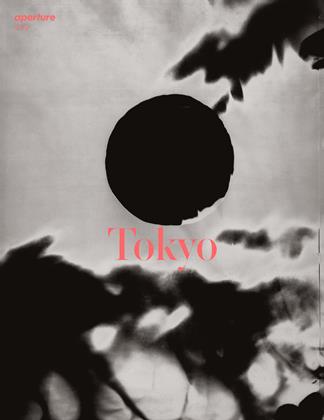Yamate-Dori
Naoya Hatakeyama
Known for combining technical precision with intellectual rigor, Naoya Hatakeyama is one of the most distinctive voices in Japanese photography today, equally comfortable referencing Isaac Newton, Gustave Flaubert, or Jean-Paul Sartre while discussing his work as he is mentioning photographic precedents such as the San Francisco-based Group f/64. Whereas a previous generation in Japan used snapshot photography to explore subjectivity, Hatakeyama’s photographs, which are often shot with a large-format 4-by-5 camera, are characterized by an investigation into the nature of the medium itself.
This does not mean his work is lacking in dynamism. Begun in 1995, the long-running series Blast is perhaps Hatakeyama’s most well-known. Made in collaboration with technicians and using a remotecontrolled camera, these photographs capture detonations at limestone quarries, freezing rocks and other debris as they are propelled through the air. The images function as sculptural propositions, dramatically visualizing the conflict between gravity and energy, while also touching upon photographic issues of time, timing, and perception. Beyond this project, Hatakeyama has displayed a consistent interest in architecture and the urban environment. For Scales (2003-6), he photographed architectural models of New York and Tokyo, playing upon the contrasts between miniature and real worlds. In Under Construction (2001), he collaborated with architect Toyo Ito to photograph the latter’s landmark Sendai Mediatheque building, in theTohoku region of Japan, while for Ciel Tombé (2007), he visited the remains of subterranean quarries beneath Paris.
Shot in 2008-10, Tracing Lines /YamateDori, the series presented here, continues Hatakeyama’s interest in the urban and focuses on one of Tokyo’s major thoroughfares, a ten-kilometer stretch of road running roughly north-south along the western perimeter of the city center. But instead of using the road as an axis for framing vistas of the urban landscape, the photographs are surprisingly claustrophobic, with a subdued palette of grays and browns and few identifiable landmarks, and largely devoid of narrative situations. More than the road itself, they capture the odd scenes to be found along its margins. One work, for example, shows a pair of traffic barriers intersected by the diagonal of a chain-link fence, in turn backed by a concrete embankment through which a zigzag staircase leads to the houses of a residential area visible at the top of the frame. In many images, the compositions are flattened so that the spatial relations between the different elements almost collapse into graphic motifs.
Shot while construction work was taking place on the Yamate Tunnel, for an expressway running beneath Yamate-Dori, the photographs repeatedly focus on temporary structures related to the construction project, suggesting the Heraclitean idea that in a city like Tokyo, you never cross the same road twice.
And indeed Hatakeyama has indicated that it is this changeability of the city— and of life itself—that drives him to photograph. “The act of producing images,” he wrote in 2010, “could more or less be said to be an individual resistance against the limits of life, and the concrete practice of that resistance.”
Andrew Maerkle
Andrew Maerkle is a writer and editor based in Tokyo.
 View Full Issue
View Full Issue
More From This Issue
-
 Pictures
PicturesKikuji Kawada
Summer 2015 By Ryuichi Kaneko -
 Pictures
PicturesRinko Kawauchi
Summer 2015 By Lesley A. Martin -
 Pictures
PicturesTakashi Homma
Summer 2015 By The Editors -
 Words
WordsMagazine Work
Summer 2015 By Ivan Vartanian -
 Words
WordsPicture Tokyo
Summer 2015 By Noi Sawaragi, Hideo Furukawa -
 Pictures
PicturesIssei Suda
Summer 2015 By Niwa Harumi














